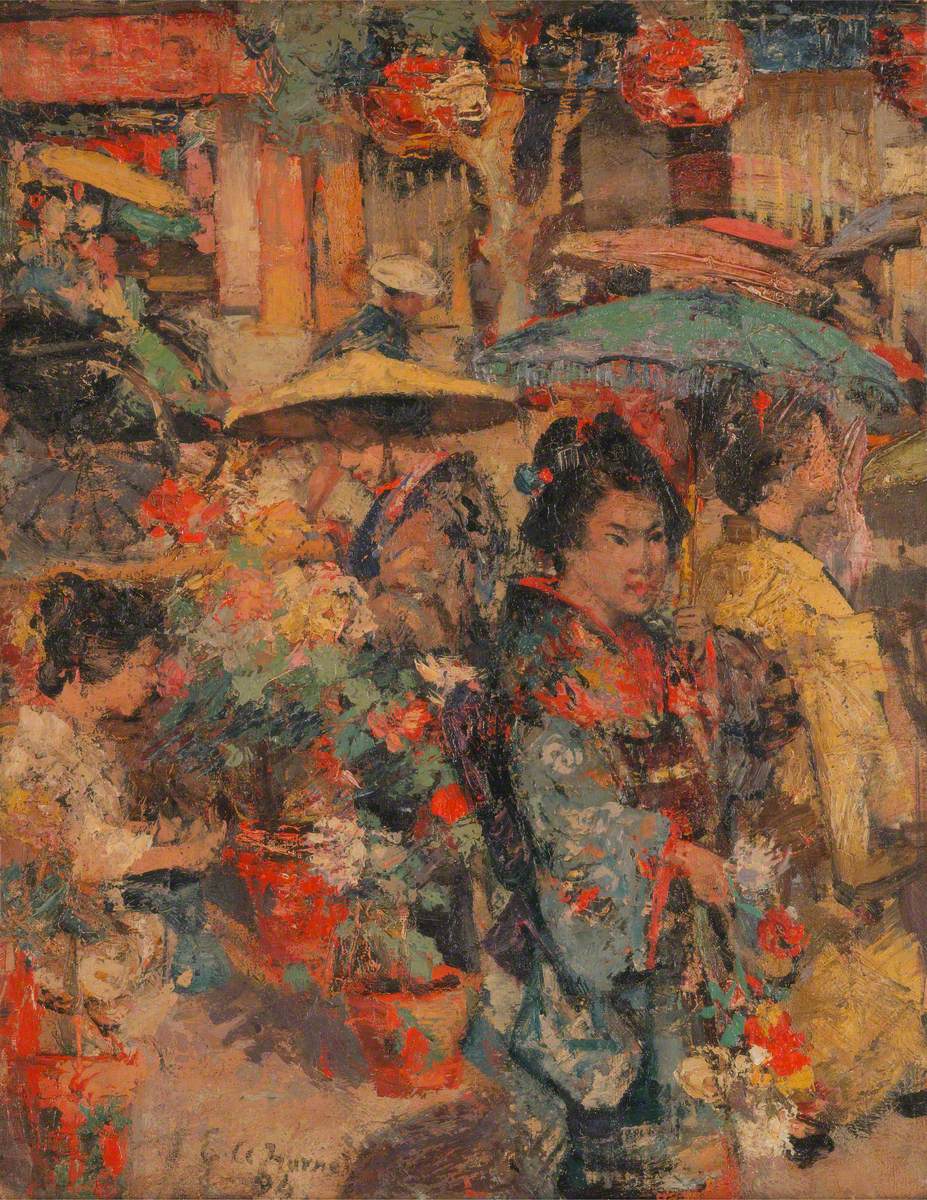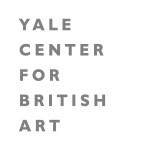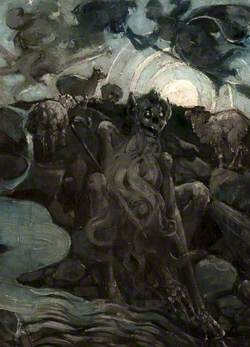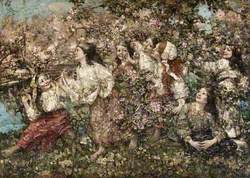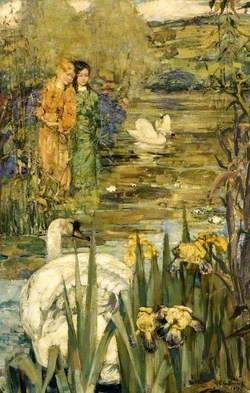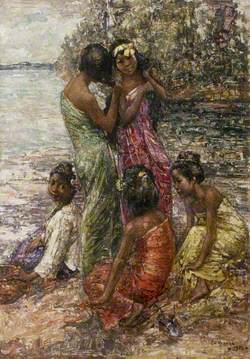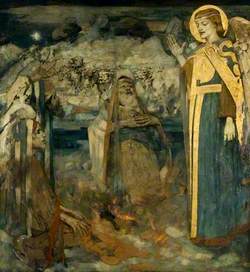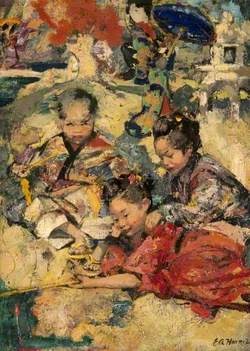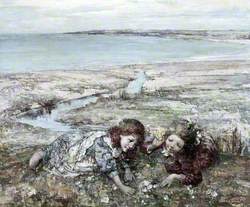How you can use this image
This image has been made available under a Creative Commons Zero licence (CC0). This means it can be used in any way, for commercial or non-commercial purposes.
Please acknowledge the collection who own the work with a photo credit — this helps spread the word about their resources.
To learn more about image reuse and Creative Commons, please see our image use page.
DownloadNotes
Add or edit a note on this artwork that only you can see. You can find notes again by going to the ‘Notes’ section of your account.
Born in Australia, E. A. Hornel immigrated to Kirkcudbright, Scotland, as a young boy. Although he attended art school in Edinburgh and completed his training in Antwerp, he eventually re-joined his parents in Kirkcudbright and became part of a constellation of artists working there during the 1880s and 1890s. The self-described 'Glasgow Boys' formed the loosely affiliated Glasgow School that took inspiration from James McNeill Whistler and collectively resisted the dominance of London and Edinburgh over the fin-de-siècle art scene. Hornel formed a particular friendship with George Henry, whose Blowing Dandelions is also in the collection and, like Flower Market, Nagasaki, reflects the group’s tendency to emphasize shape and colour over realism, in a manner sympathetic to impressionism and postimpressionism.
Title
Flower Market, Nagasaki
Date
1894
Medium
oil on linen mounted on mahogany panel
Measurements
H 45.7 x W 35.6 cm
Accession number
B1989.17.9
Acquisition method
gift of Isabel S. Kurtz in memory of her father, Charles M. Kurtz
Work type
Painting
Signature/marks description
signed and dated in black paint, lower left: E A Hornel | 94
